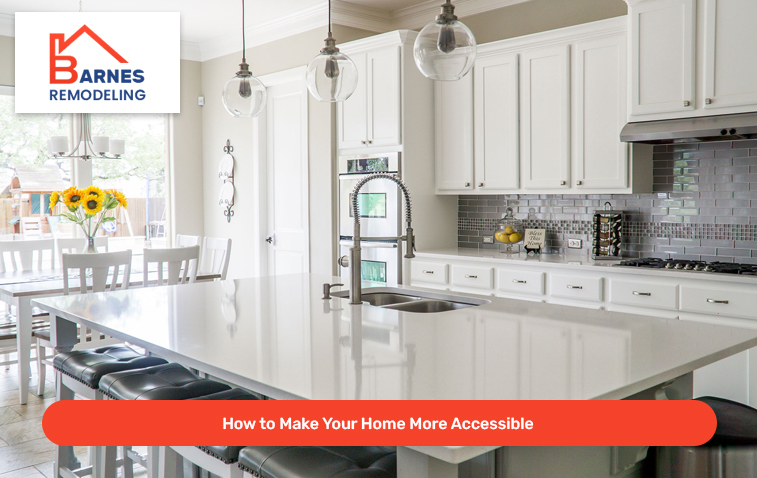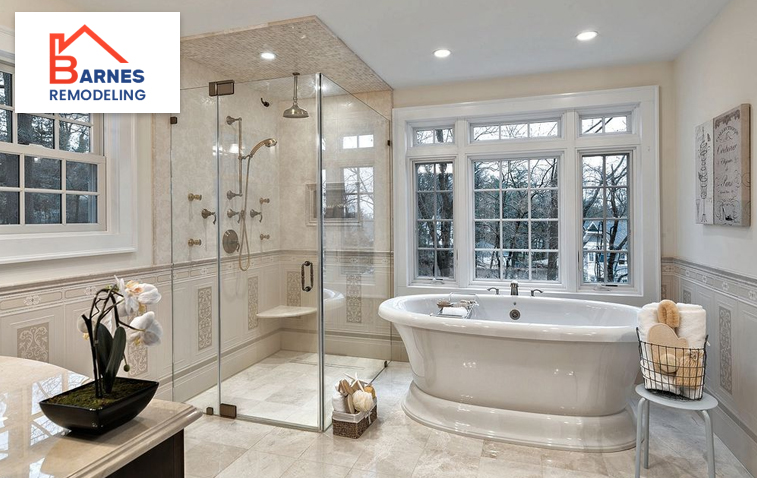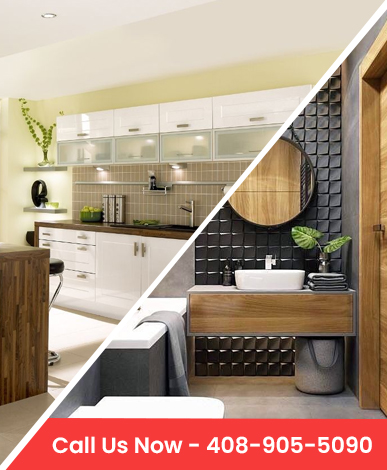How to Make Your Home More Accessible
Making your house more accessible should be on everyone’s list of potential home improvement projects. Even if you have elderly parents, a disabled family member or a kid who uses crutches, renovating your house is a good idea! Read this blog to know how to create an accessible home remodel that enhances comfort, safety, and independence for everyone, especially for elderly family members and those with mobility challenges.

Making your home more accessible doesn’t need tearing down walls or making significant alterations. Make your house more accessible by following these recommendations.
Making the kitchen a disaster zone
If the kitchen isn’t adapted to the needs of people in wheelchairs, they will have a difficult time utilizing it. Starting with the sink and counter area, it is necessary to decrease both heights. If you can no longer stand on your own, this intervention will make all kitchen tasks more manageable. A person with a handicap will be unable to utilize the cabinets if they remain mounted to the wall.
You’ll need to remove everything from your sink to your cupboards and shelves. Cooking will be more enjoyable if the whole structure is lowered by around 20 inches. You may be motivated to cook more and eat better due to reading this article.
A few tips to enhance accessibility features for elders & disabled people at your home
The most crucial bathroom actions
The bathroom is one of the most vulnerable rooms in the house for handicap accessibility. Injuries often occur here because the surfaces are frequently wet or slick. This makes it essential to improve accessibility in this area. Here’s how you can make the space safer and more accessible.
|
Accessible doors |
For wheelchair use the bathroom doors must be at least 32 inches wide. Is your bathroom off the side of a hallway? In this case, the door must be 36 inches in width. |
|
Accessible lights |
Lightning is an integral part of a safe bathroom. The key will be to install the lights at a certain height that should be easily reachable for both sitting and standing persons. |
|
Accessible toilets |
The toilet installation in the bath must adhere to ADA regulations. It states that the toilet bowl rims must be anywhere in the range of 17 to 19 inches from the finished floor. |
|
Grab bars |
You can install grab bars at strategic spots in the bathroom. You can have them next to the toilet, shower, and bathtub |
Access to the front of the house
Most houses have a porch with several steps going up to it. Such homes are impossible for people with impairments to enter on their own. As a result, a wheelchair ramp or elevator must be installed in their place. Individuals’ ability to move their arms makes the former an acceptable alternative. It’s critical to ensure that the ramp is constructed at the right angle so that the climb is not too steep.
The kind of wheelchair you have will dictate the ramp you need to build. They come in a variety of shapes and sizes and a variety of additional functions. Check out a wheelchair purchase guide to get the right one for your situation. After that, you may have a custom-made wheelchair ramp erected.
For those who can’t use their arms or hands, a wheelchair elevator is the best option. If this is the case, you may need to build the elevator to the entry area rather than remove the porch steps.
Floors that are easy to walk on
Walk-in showers should take the place of bathtubs, as we’ve noted. All of your rooms and the floors in each one should be able to accommodate a wheelchair. The shower cubicle should not have a door to make it easier for people in wheelchairs to use. The threshold at the entry should also be eliminated if you want to make your property more accessible.
Wheelchairs and crutches may easily navigate your house if there aren’t any floor obstructions. Also, keep an eye out for any portions of the flooring higher or lower than the rest. All the floors should be on the same level, ideally.
Conclusion
The residences of those with impairments should be modified to meet their specific requirements. To suit their needs, they may choose to purchase a new house in certain situations. In most situations, people make alterations to the houses they already own.
Make your house accessible to everyone, including those with disabilities, whether you’re one of them or have a member of your family who is. Consequently, the occupants will enjoy a higher quality of life. By incorporating accessible home remodel features, you can create a welcoming environment that meets the needs of all household members, ensuring safety, comfort, and a better quality of life for everyone.
FAQs
What does an accessible home mean?
An accessible home means making changes through construction & modification and renovations to enable independent living for people with disabilities.
How can I enhance accessible features in the living space?
You can do a lot ranging from replacing the stairs with handicapped accessible ramps. If your budget permits, you can think of completely doing away with stairs and having an escalator rather.
What are the outdoor modifications you need to make for a disabled member?
-
The garage door opening height should have a minimum of 9’ vertical clearance/
-
A parking space for a handicapped should have at least 12’x6’ width and 48” clearance
-
The doorbell should be chair height and that is about 48”. The bell should be loud enough to be heard right throughout the home.
What are the bedroom modifications necessary?
-
The bedroom door should be 32” wide.
-
The door handle should be easy to grasp.
-
The mattress should not be higher than 22” from the floor
-
The thermostats and lamp controls should be 48” of the floor


